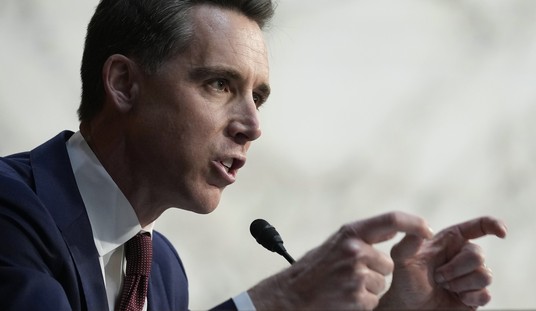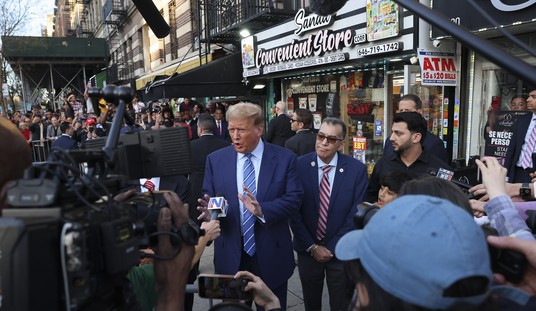Earth to Washington: The free market offers practical solutions for “going green.” Private entrepreneurs will literally fly to the moon to solve the U.S. technology crisis while government initiatives to support green technology fall flat.
The set of 17 rare elements known as “rare-earths” is integral to normal technology like iPads, fiber–optic cables and military equipment as well as “clean” technology like wind turbines, solar panels and electric batteries.
The U.S. used to lead the world in mining rare-earths through a California mine called Molycorp. However, environmental regulations sent this mine into extinction and the U.S. lost her competitive technology advantage. Today, years later, Molycorp is slowly re-building after meeting stricter U.S. environmental standards.
Since the U.S. stopped mining her own resources, China now calls the shots on rare-earths. The Chinese government and organized crime circles within China run pollution-hissing mines that churn out roughly 97 percent of the global rare-earth supply. High demand for rare-earths within the Chinese marketplace, environmental issues and political leverage are factors leading China to cut back on exports. Consequently, rare-earth prices are skyrocketing.
As hall of fame quarterback and former Minnesota Viking Fran Tarkenton told the St. Paul Pioneer Press on Nov. 24, 2010, “In my life, when I tried to have a quick fix to something, it turned out worse than it was before.” Unfortunately, many U.S. politicians see government intervention in clean tech as the quick fix to energy independence, job creation, and a cleaner environment.
Recommended
Government clean tech programs for solar panels, wind turbines and electric batteries ironically support China’s dirty rare-earth mining at unsustainable costs. A single “utility-scale” wind turbine requires 661 lb. of the element neodymium, GM’s Chevy Volt needs 7 lb. of magnets made from rare-earths and the price of the iPod-essential rare-earth called dysprosium has jumped from $6.50 to $130 per lb., according to TIME Magazine.
The New York Times reports that mining rare-earths is complicated by the fact that most elements are only produced as byproducts of mining something else, such as copper. Furthermore, extracting rare-earth elements releases significant amounts of low-level radioactive waste into the environment.
The U.S. Energy Information Administration shows that wind and solar energy accounted for less than one percent of total U.S. energy consumption in 2009. Caithness Wind Farm Information Forum reports that wind turbines have killed wildlife, including protected species, and have been responsible for 35 fatalities in the U.S. from 1970 to 2010.
Despite these costs and risks, the Obama Administration wants to push clean tech to produce before its time by throwing out arbitrary and costly goals like “1 million electric vehicles on the road by 2015.” Minnesotans are being asked to be guinea pigs for a proposed tax on mileage. This tax would ask Americans who commute long distances in traditional cars to sacrifice twice by paying for elites to drive roller skates on rare-earth batteries.
With impeccable timing, a day before the one-year anniversary of the Gulf of Mexico oil spill, the Administration announced that it had rushed through approval for the controversial and environmentally-intrusive Cape Wind Project. With 130 wind turbines in the project, I estimate it will take 85,930 lb. of the rare-earth neodymium to supply electricity to just 400,000 homes off Nantucket Sound.
Good thing China is only charging us an arm and a leg for this clean tech experiment that provides a sliver of the population with electricity while disrupting birds and the aquatic ecosystem.
I think we can solve the technology crisis and conserve the earth by implementing practical, free market ideas.
For example, the Empire State Building recently completed a $13 million dollar energy-saving retrofit that will reduce annual energy consumption by 38 percent. The retrofit implemented common sense techniques like recaulking limestone slabs and spraying foam insulation in walls. Project manager, Paul Rode, told TIME Magazine: “I can’t tell you how many people say, ‘Why not install solar cells or put a little windmill on the roof?’ Because it doesn’t make business sense. It makes much more sense to lower energy use.”
As I write this column, entrepreneurs at the private venture California company MoonEx are developing plans for robotic rovers to uncover a “gold mine” of rare elements and metals on the moon’s surface. My hope for the future is emboldened by free enterprise, not big government. The government got us into this mess by regulating California’s Molycorp mine out of business years ago. Free enterprise and innovation - not government-approved green programs - will dig us out.

























Join the conversation as a VIP Member